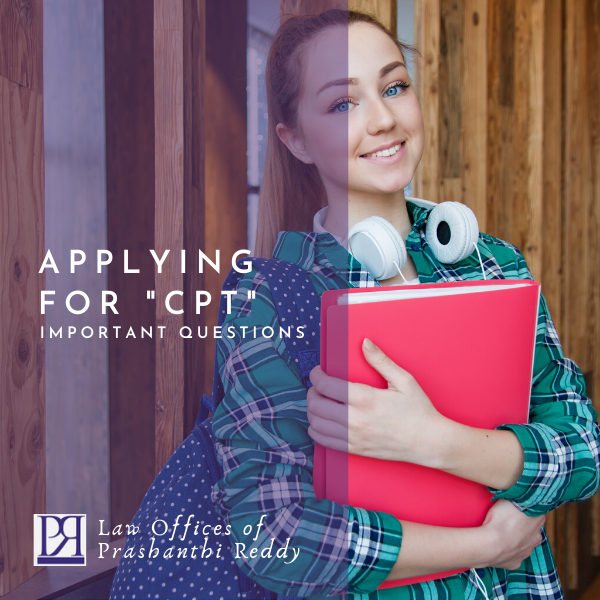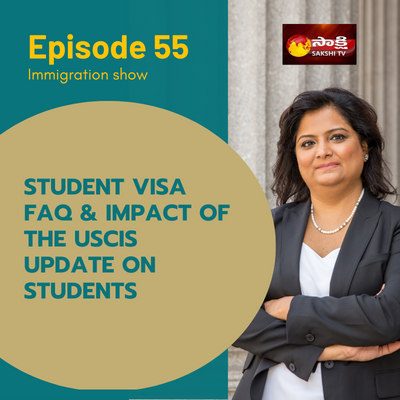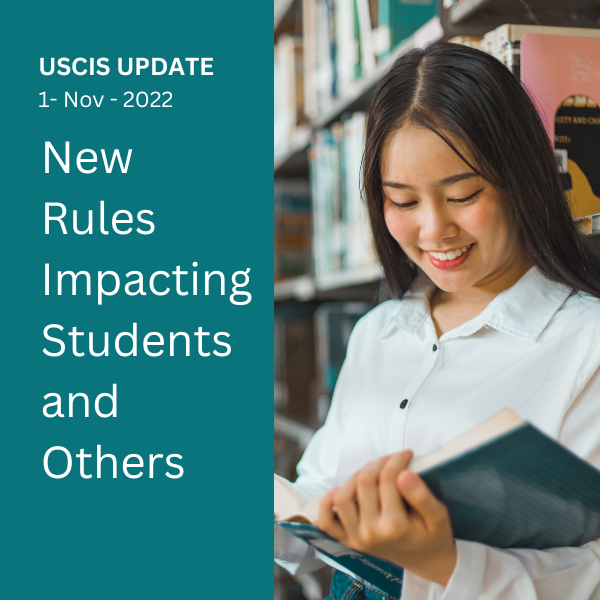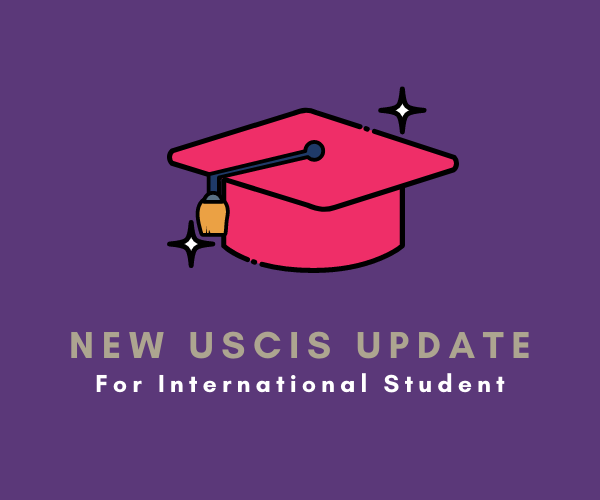CPT gives all international students with F1 Students visa authorization to pursue part-time or full-time training employment and work as a paid intern. A lot of colleges and universities in the US offer work-study options to their domestic students but the same cannot be offered to international students where CPT Work-Study programs become a mode to support international students to acquire a paid position on-campus or off-campus.
Important things every F1 visa holder should know before applying for CPT work-study program applicants should keep in mind.
A1. Can one apply for CPT Status on the first day of the Master’s Program?
Under the current law and as per the ICE website, graduate students are allowed to take Day-1 CPTs as long as the program requires immediate participation in the internship program.
As per regulation 8CFR214.2
1. An international student may with F1-visa be authorized by the DSO to participate in a curricular practical training program that is an integral part of an established curriculum.
2. Curricular practical training is defined to be alternative work/study, internship, cooperative education, or any other type of required internship or practicum that is offered by sponsoring employers through cooperative agreements with the school.
3. Students who have received one year or more of full time curricular practical training are ineligible for post-completion academic training. Exceptions to the one academic year requirement are provided for students enrolled in graduate studies that require immediate participation in curricular practical training. A request for authorization for curricular practical training must be made to the DSO. A student may begin curricular practical training only after receiving his or her Form I-20 with the DSO’s endorsement.
A2. How one can become eligible for the CPT Work-study program?
To be eligible, CPT should be integral to your major and the experience must be part of your program of study.
When you enrol at the graduate level, your designated school official (DSO) may authorize CPT during your first semester if your program requires this type of experience. Ask your DSO for details.
Your DSO is responsible for providing foreign students with a new Form I-20, “Certificate of Eligibility for Nonimmigrant Student Status. This shows that the DSO has approved the student for employment.
It’s important to remember that,
1. You can work on CPT either full-time or part-time.
2. CPT requires a signed cooperative agreement or a letter from your employer.
3. If you have had 12 months or more of full-time CPT, you are ineligible for OPT, but part-time CPT is fine and will not stop you from doing OPT.
A3. Which important documents are usually requested by USCIS to apply for CPT status?
Documents requested include –
1. A document that contains the name of the courses and course codes in which the beneficiary is enrolled that requires CPT. A letter from the University (submitted above) also refers to the courses that require CPT;
2. A document that states that immediate participation in CPT is required and is an integral part of the course that is necessary for the beneficiary’s studies. Please also refer to the letter from the school that shows that immediate participation is an integral part of the study (letter from school submitted above);
3. The beneficiary’s job description (this includes his job duties, pay, and period of employment);
4. Evidence of the cooperative agreement(s) and CPT employment verification forms between the beneficiary’s CPT and the employer’s major area of study;
5. Evidence that the beneficiary’s CPT is or was directly related to the beneficiary’s major area of study.
A4. Can I enrol in a second Master’s Degree Program to continue working on CPT with the current employer if H-1b was not picked this year and the OPT also is expiring?
The USCIS recently changed its interpretation on this subject. As such, unless the student enrols in a program that is at a higher educational level, the student cannot be granted OPT once the student has previously been granted OPT for one year. For example, if a student completes a Master’s degree and enrols in another Master’s degree program, the student is not eligible for another OPT term. However, if the student enrols in a PhD program after completing a Master’s degree program, an additional OPT term can be granted.
“A student may be authorized 12 months of practical training, and becomes eligible for another 12 months of practical training when he or she changes to a higher educational level.” 8 CFR 214.2(f)(10).
This has historically been interpreted only to apply to OPT, not CPT. However, the regulation itself just refers to “practical training” and does not specify which types of practical training it applies to. USCIS is now choosing to interpret this to include CPT as well.
All those who are keen on working in the US, and could not get through the H1B visa lottery, may still look for ways to work abroad. Curricular Practical Training, i.e., CPT is a mandatory employment program for F1 students. The H-1B application and petitioning process has now become more complicated especially with the introduction of the electronic registration that is to be used for the first time this year.
To ensure you are not found wanting, seek the counsel of an experienced immigration lawyer. The Law Offices of Prashanthi Reddy is ideally prepared to help you through the entire change of status process.






